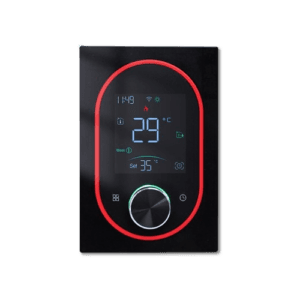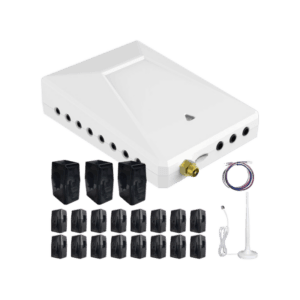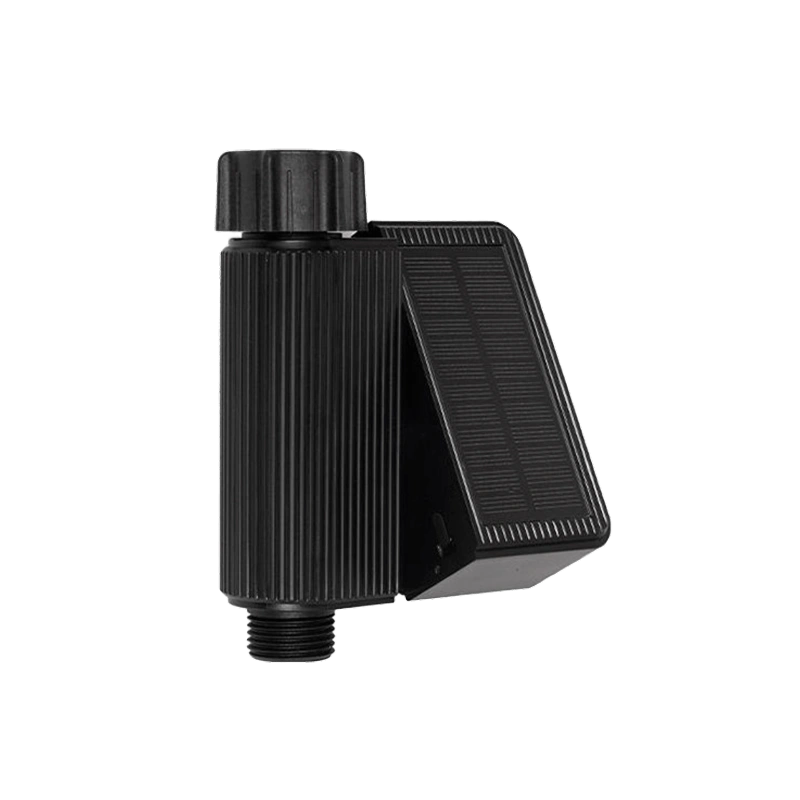In today's home environment, proper temperature control is not only related to the comfort of living but also directly affects energy consumption and economic benefits. From underfloor heating to central air conditioning, different types of thermostats play a core role, helping us maintain a constant and comfortable indoor temperature through the changing seasons. With the development of technology, various types of thermostats have appeared on the market, each with its unique functions and applicable scenarios. This article will introduce seven common types of home thermostats through detailed tables and analysis, helping you understand the characteristics and applications of each type of thermostat to make more appropriate choices.
Home Thermostat Overview
To more visually present the basic information and main functions of different thermostats, we first compare these seven common types of home thermostats through a table.
Table 1: 7 Types Thermostats and Function Comparison
| Thermostat Type | Main Features | Recommended Environment |
|---|---|---|
| Underfloor Heating Thermostat | Controls underfloor heating systems, providing even indoor warmth. | Residential, office, especially in cold regions. |
| Heat Pump Thermostat | Controls heating and cooling of heat pumps, efficient energy use. | Areas with significant seasonal changes. |
| Electric Heating Thermostat | Manages the temperature of electric heaters or electric underfloor heating. | Any small space needing quick heating. |
| Central Air Conditioning Thermostat | Regulates the heating and cooling system of an entire building. | Large residential or commercial buildings. |
| Water Heater Thermostat | Controls water heating equipment to ensure constant water temperature. | Homes, hotels, or other places needing a lot of hot water. |
| Solar Water Heater Thermostat | Manages solar hot water systems, optimizing energy absorption and conversion efficiency. | Environmentally conscious areas with plenty of sunlight. |
| Fresh Air Thermostat | Controls fresh air systems, adjusting the temperature and quality of air entering indoors. | High-density residential areas, environments needing continuous fresh air supply. |
Through this table, we can preliminarily understand the main functions and applicable environments of each thermostat. Next, we will detail the specific characteristics and applications of each type of thermostat.
Detailed Introduction of 7 Types Thermostats
1. Underfloor Heating Thermostat
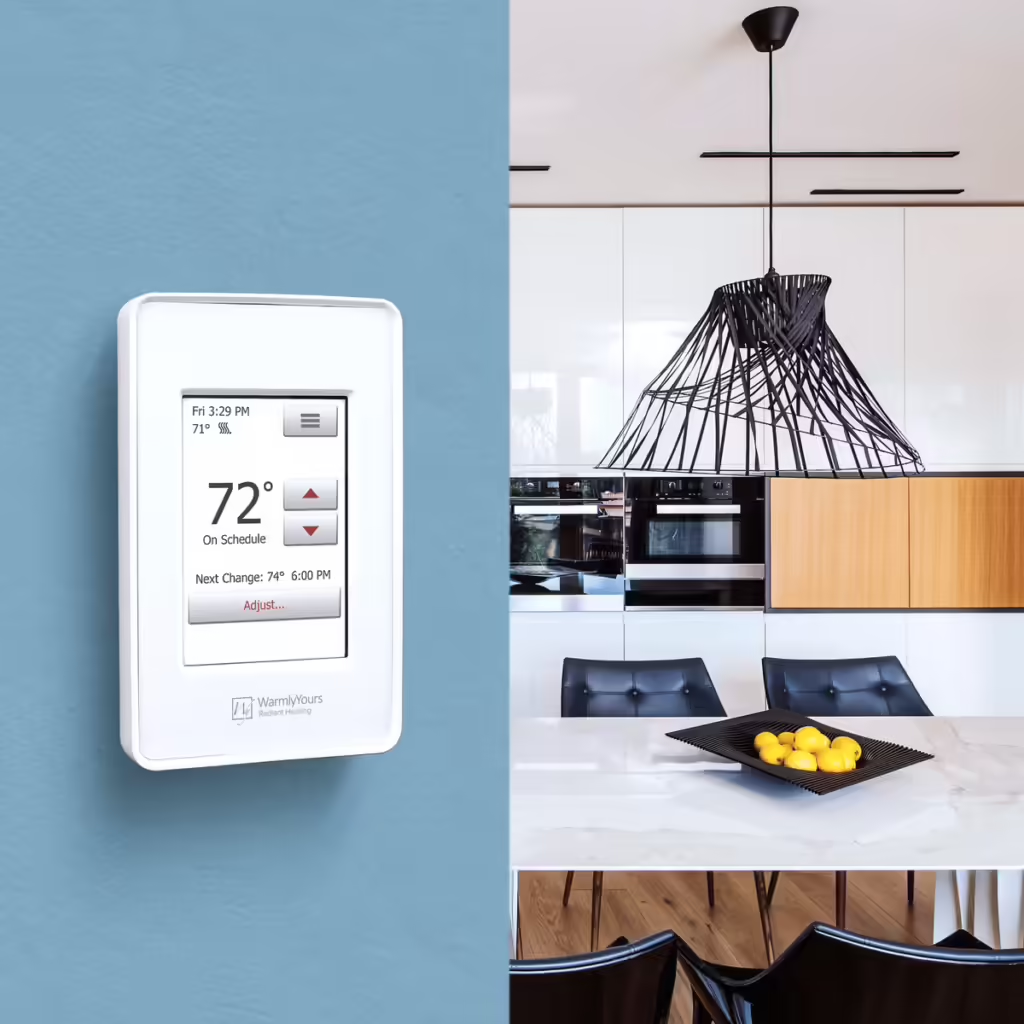
Introduction and Function:
The underfloor heating thermostat is designed to control floor heating systems. It monitors indoor temperatures through temperature sensors and adjusts the output of underfloor heating to ensure the floor temperature is even and meets the set comfort level. The heat provided by the underfloor system radiates evenly from the ground up, increasing thermal efficiency and reducing air dust movement, which is a significant advantage for people sensitive to respiratory systems.
Typical Usage:
In residential and commercial properties, underfloor heating thermostats are commonly used in main living areas such as living rooms, bedrooms, and bathrooms, providing continuous and comfortable heat. Users can set daily or weekly heating schedules based on their living habits to maximize energy efficiency.
The following sections will continue to detail the remaining six common types of home thermostats, their functions, typical usage, and characteristics.
2. Heat Pump Thermostat
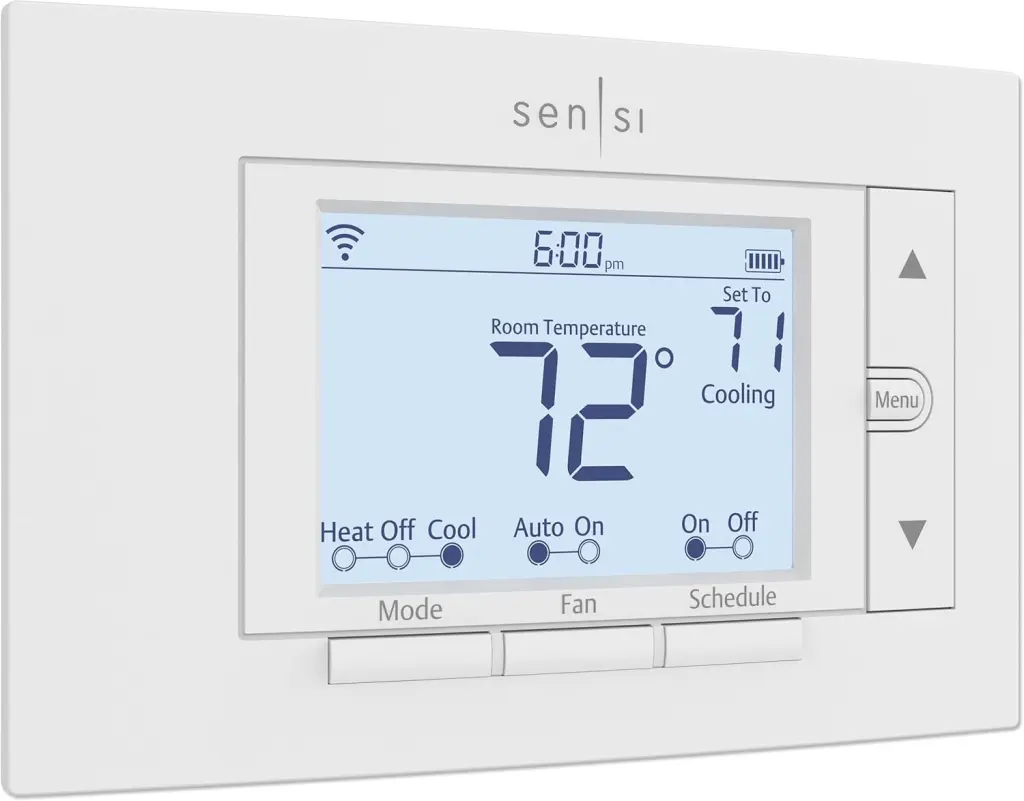
Introduction and Function:
The heat pump thermostat controls heat pump systems, which can provide both heating and cooling functions, making it very suitable for areas with significant temperature changes throughout the year. The heat pump thermostat can optimize the operation of the heat pump, improving energy efficiency and reducing energy consumption.
Typical Usage:
Heat pump thermostats are typically installed in residential or commercial buildings that require year-round temperature regulation. Users can set temperature thresholds to ensure indoor temperatures remain comfortable regardless of external temperature changes.
3. Electric Heating Thermostat
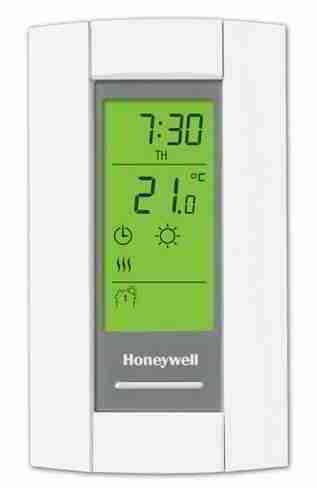
Introduction and Function:
The electric heating thermostat controls electric heating equipment, such as electric radiators or electric heated floors. This type of thermostat can precisely regulate the output of electric heating devices to maintain a stable indoor temperature.
Typical Usage:
In homes or offices, electric heating thermostats are suitable for quickly heating small spaces. Users can adjust the temperature as needed or set timers to automatically turn heating on or off at specific times.
4. Central Air Conditioning Thermostat
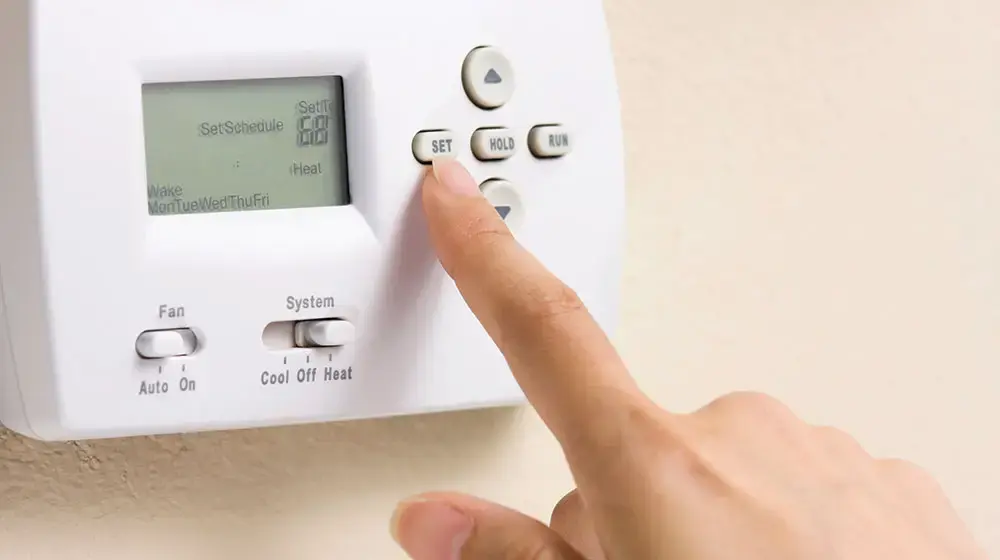
Introduction and Function:
The central air conditioning thermostat manages the central air conditioning system, controlling the heating and cooling of an entire building or house. This thermostat can achieve complex multi-zone temperature control, improving overall energy efficiency.
Typical Usage:
Central air conditioning thermostats are usually installed in large residential or commercial buildings, setting different temperatures for different areas or floors to achieve precise temperature control.
5. Water Heater Thermostat
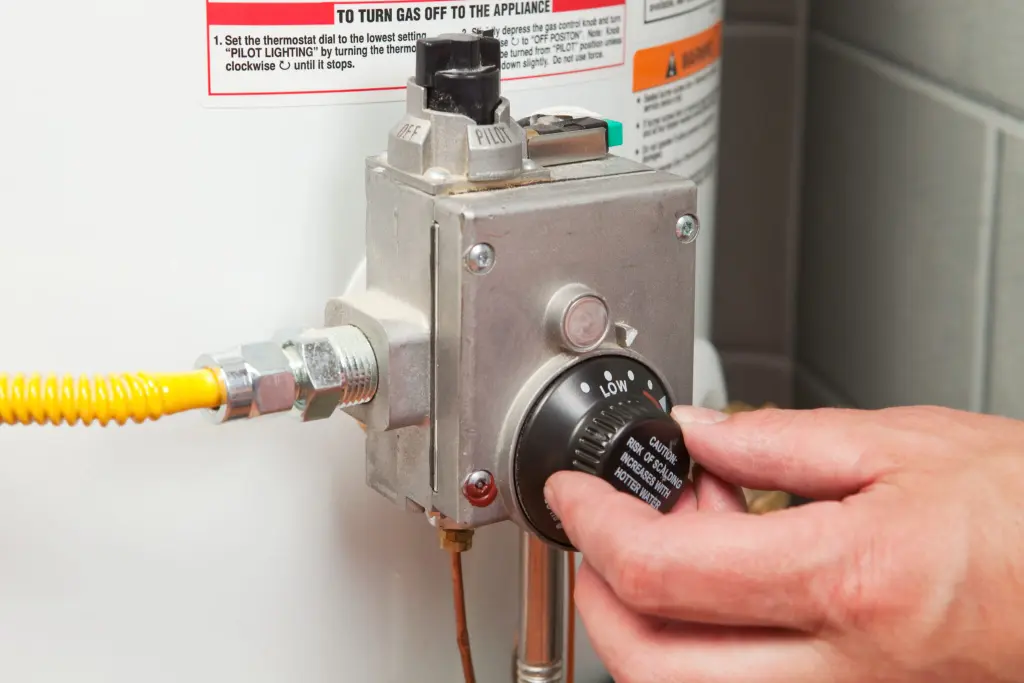
Introduction and Function:
The water heater thermostat controls the operation of water heaters to ensure constant water temperature and avoid energy waste. This thermostat can precisely adjust the temperature of the water heater, suitable for homes, hotels, or other places that require a large amount of hot water.
Typical Usage:
Users can set the water temperature according to personal preferences and needs. Water heater thermostats can also set specific heating schedules to save energy and provide hot water when needed.
6. Solar Water Heater Thermostat
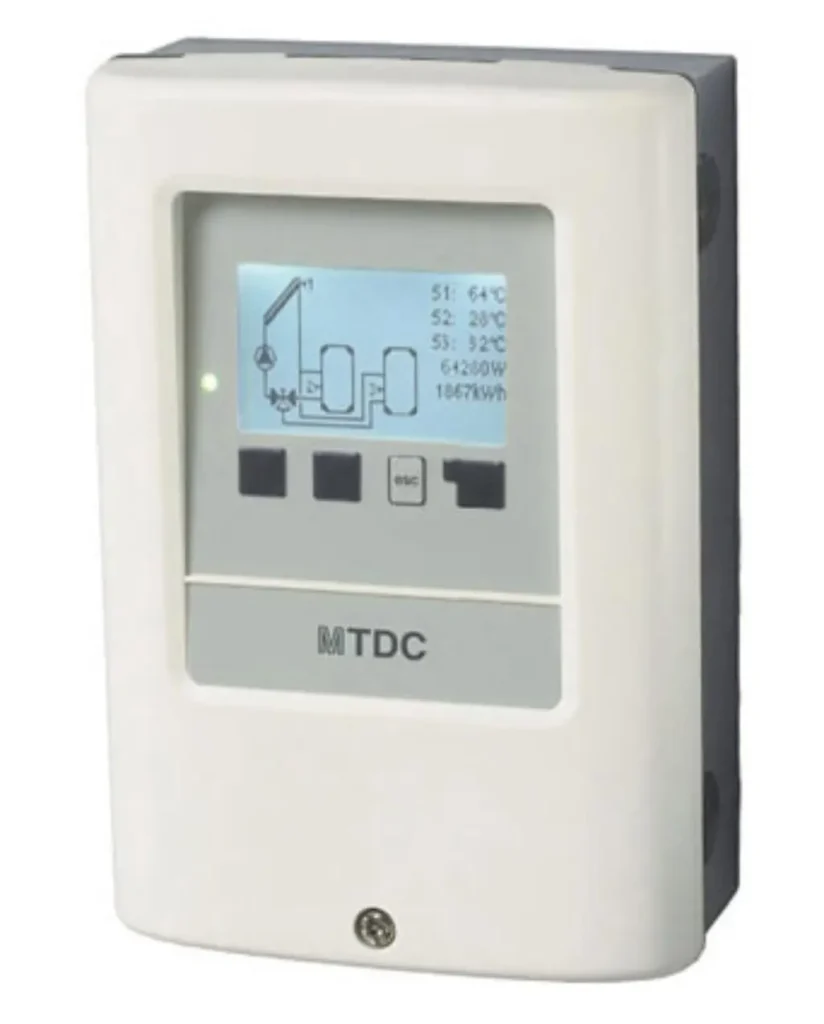
Introduction and Function:
The solar water heater thermostat manages the temperature exchange between solar collectors and storage tanks. It optimizes the absorption and conversion of energy, ensuring system efficiency is maximized while preventing overheating.
Typical Usage:
In sun-rich areas, solar water heater thermostats can automatically adjust hot water production based on solar radiation intensity, ensuring a continuous supply of efficient and environmentally friendly hot water.
7. Fresh Air Thermostat
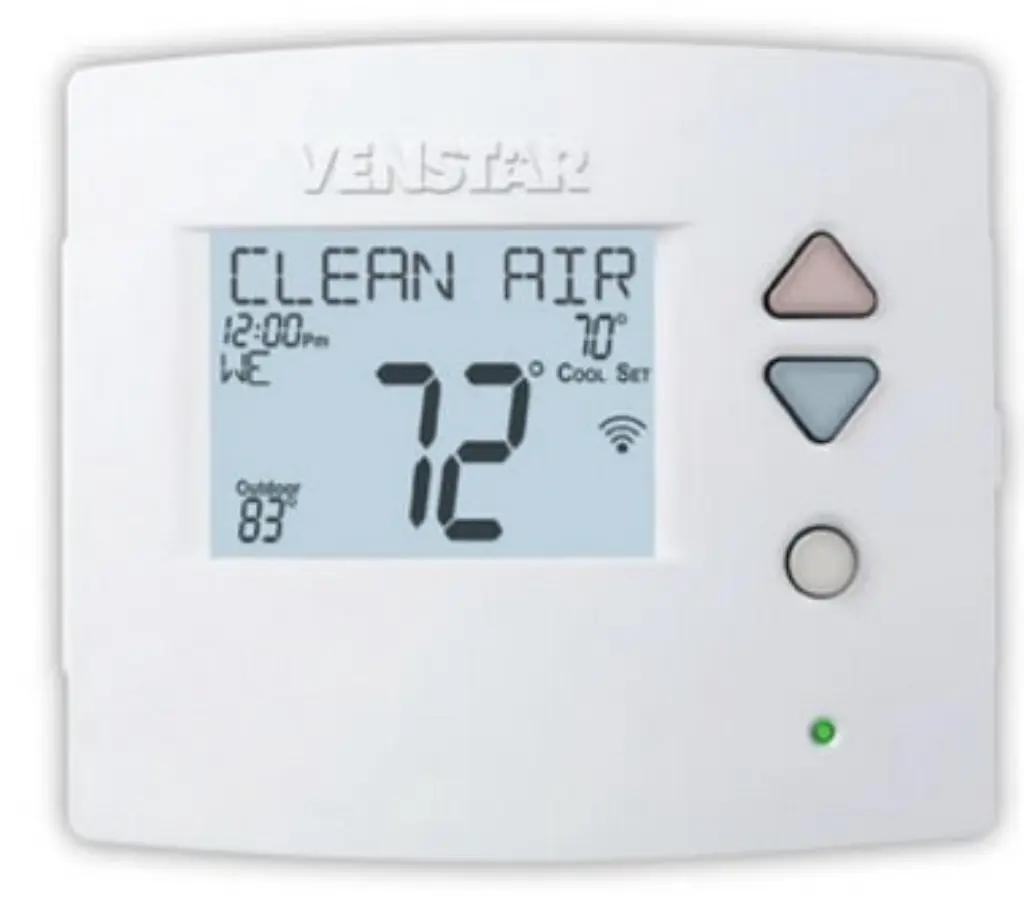
Introduction and Function:
The fresh air thermostat controls the operation of fresh air systems, which are responsible for introducing processed fresh air indoors. It can adjust the temperature of the incoming air, improving air quality and providing a healthy, comfortable environment for living spaces.
Typical Usage:
Fresh air thermostats are particularly important in high-density residential areas or industrial environments. They can automatically adjust the intake based on the temperature difference between the outside and inside, ensuring indoor air is fresh and at a suitable temperature.
This detailed introduction provides specific information and usage guidelines for various thermostats, helping users choose the most suitable thermostat based on their actual needs and living environments. The following sections will involve more discussions on international specifications and standards, ensuring global users can safely and effectively use these devices.
Wiring Methods and Control Strategies
Next, we will detail the wiring methods and control strategies of various thermostats through another table, ensuring you can choose the most suitable configuration based on your home's specific needs.
Table 2: 7 Types Thermostats Wiring Methods and Control Strategies
In this section, we will detail the wiring methods and control strategies of various thermostats through a table, which is crucial for ensuring correct installation and optimal performance of the devices.
| Thermostat Type | Wiring Method | Control Strategy |
|---|---|---|
| Underfloor Heating Thermostat | Usually includes power, ground, and control wires, connected to the underfloor heating system's power and control ends. | Temperature differential control, PID control, programmable and smart learning features. |
| Heat Pump Thermostat | Needs to be connected to the heat pump's power and control ends, may require a multi-wire system to support heating and cooling functions. | Temperature differential control, time schedule control, smart adjustment. |
| Electric Heating Thermostat | Simple two-wire or three-wire systems, directly controlling electric heating elements. | Temperature differential control, timer control, some models support remote control. |
| Central Air Conditioning Thermostat | Complex multi-wire systems, needing connection to various parts of the central air system. | Zone control, temperature and humidity joint control, smart and remote control. |
| Water Heater Thermostat | At least two-wire wiring, controlling the power switch of the heater. | Temperature differential control, efficiency optimization control. |
| Solar Water Heater Thermostat | Includes temperature sensor wires, power wires, and control wires, to optimize solar energy collection and use. | Temperature priority control, efficiency monitoring, automatic adjustment. |
| Fresh Air Thermostat | Usually needs to connect with indoor and outdoor temperature sensors and fresh air unit. | Automatic adjustment based on indoor and outdoor temperature difference, timer control, air quality feedback control. |
Through this table, we can see the differences in wiring methods and control strategies among different types of thermostats, which directly affect the installation process and daily operation efficiency of the devices.
International Specifications and Standards
For thermostats used across countries and sold in international markets, understanding and complying with the electrical specifications and safety standards of different countries and regions is extremely important. Here is a table summarizing some of the main market specifications and wiring standards.
Table 3: Specifications and Wiring Standards in Different Countries and Regions
| Country/Region | Voltage and Frequency Requirements | Regulations and Certifications | Special Wiring Requirements |
|---|---|---|---|
| USA | 120V/60Hz | UL Certification, NEC Electrical Code | Strict requirements for grounding and protection measures |
| EU | 220-240V/50Hz | CE Marking, RoHS Compliance | Must comply with the EU's Low Voltage Directive and Electromagnetic Compatibility Directive |
| China | 220V/50Hz | CCC Certification | Must adapt to high population density and high frequency of use requirements |
| Japan | 100V/50Hz or 60Hz | PSE Certification | Specific anti-seismic and fire-resistant standards |
| Australia | 230V/50Hz | SAA Certification | Installation must consider outdoor climate effects, such as waterproofing and UV protection |
This table shows some of the key electrical and safety standards to consider when operating in the global market, helping manufacturers and users ensure product compatibility and safety.
Smart Control Modes: Innovation in Modern Thermostats
As technology continues to advance, the widespread adoption of smart home systems has greatly changed our way of managing home appliances, and thermostats are no exception. Smart control modes make thermostats not just simple temperature adjustment devices but a system that can increase energy efficiency, enhance comfort, and simplify daily life. This section will explore the control methods of smart thermostats and their benefits.
Basic Features of Smart Thermostats
The main difference between smart thermostats and traditional thermostats is their connectivity and automation features. These thermostats are usually connected to the home network through Wi-Fi or other wireless technologies (such as Zigbee or Z-Wave), allowing users to remotely control the home temperature via smartphone apps, tablets, or voice assistants (like Amazon Alexa, Google Assistant, or Apple HomeKit).
Main Smart Control Functions
- Remote Control: Users can view and adjust the home temperature settings from anywhere via an app, whether at the office or on vacation.
- Automatic Scheduling: Smart thermostats can automatically set temperature schedules based on users' daily activity patterns. For example, it can start heating the home automatically before you usually get up, ensuring the room is warm and comfortable when you wake up.
- Energy Efficiency Analysis: Many smart thermostats provide detailed energy consumption reports and analyses, helping users understand how their heating and cooling habits affect energy consumption and how to adjust settings to reduce energy costs.
- Geofencing: Using the location of users' smartphones, smart thermostats can know when users leave home or are on their way home. The system adjusts the temperature accordingly to optimize energy efficiency and provide a comfortable environment when users arrive.
- Voice Control: Once integrated with smart home assistants, users can simply use voice commands to adjust temperature settings, greatly increasing convenience and accessibility.
- Learning Preferences: Some high-end smart thermostats, like the Nest Learning Thermostat, have the ability to learn users' preferences and can automatically establish a suitable temperature schedule for the home within a few days without much user intervention.

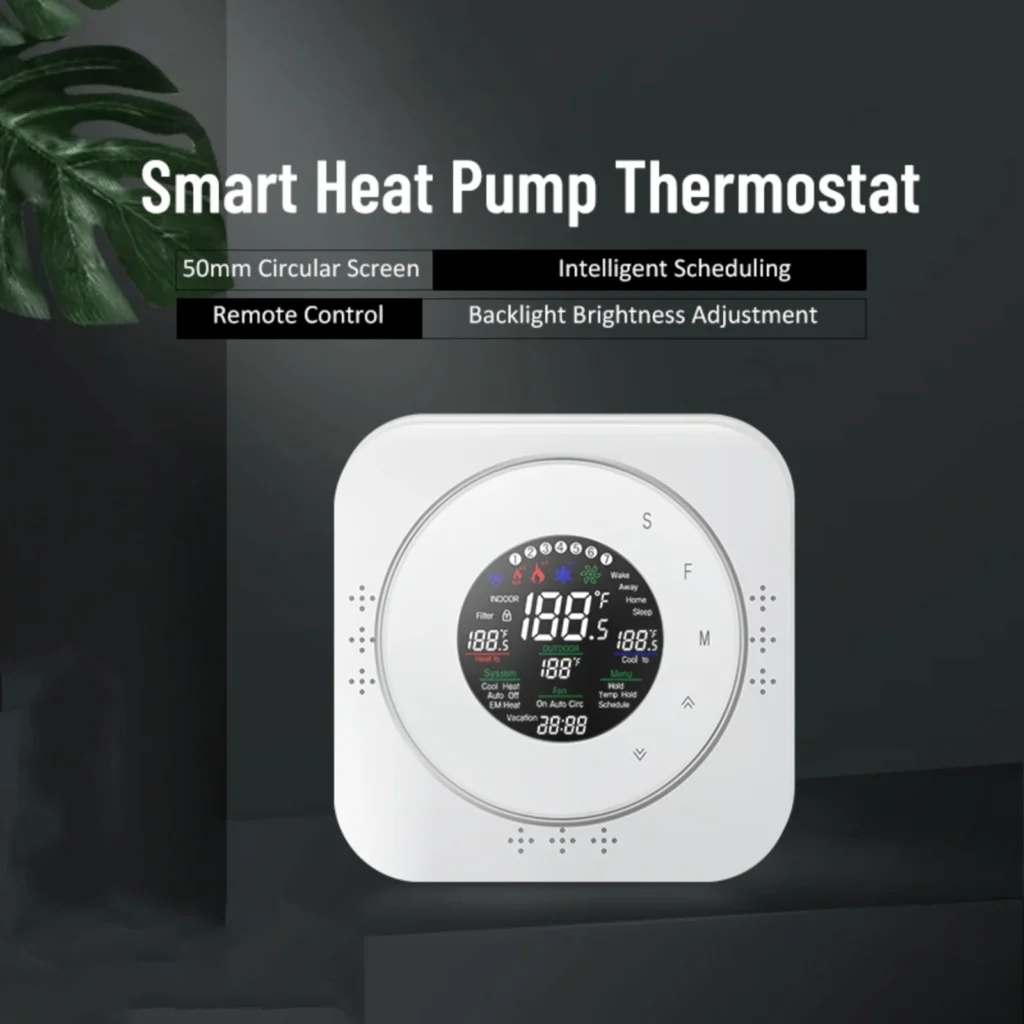
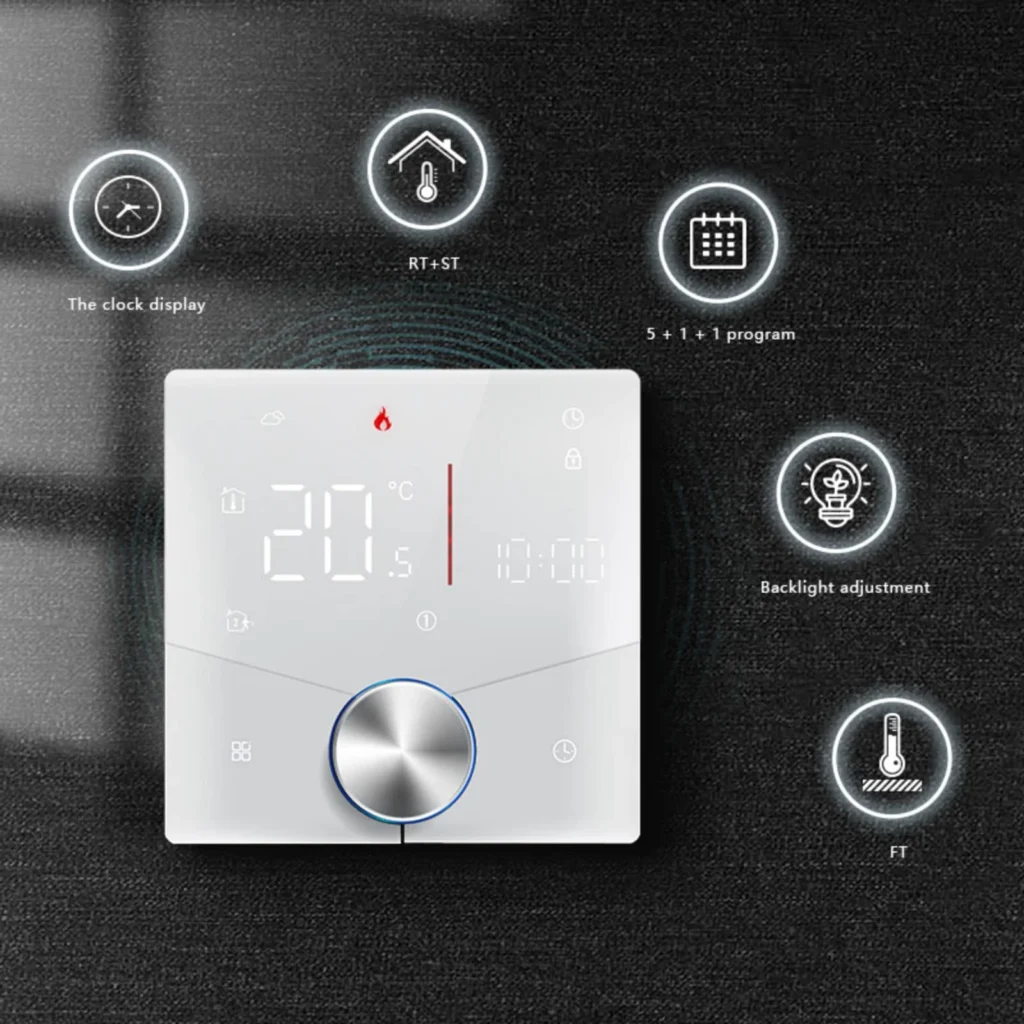
Practical Applications of Smart Thermostats
Considering the potential of smart thermostats to improve energy efficiency and user comfort, many modern homes and offices have begun deploying these devices. For example, a family might use a smart underfloor heating thermostat to preheat rooms in winter, while optimizing cooling efficiency with a central air conditioning thermostat in summer.
The integration and application of smart thermostats not only enhance the comfort of living and working environments but also help achieve a more sustainable lifestyle by precisely controlling and intelligently adjusting to reduce energy waste. As technology continues to advance and user awareness increases, it is expected that smart thermostats will become an important component of home automation in the future.
Energy-Saving Effects and Indicative Data of Smart Thermostats
Smart thermostats not only improve the comfort and convenience of homes, but they also play a crucial role in energy saving and reducing environmental impact. Through smart features, these devices can optimize the timing of heating and cooling, reducing unnecessary energy consumption, thereby bringing significant energy-saving effects to users. This section will explore the energy-saving effects of smart thermostats and provide some specific energy-saving data.
Energy-Saving Features
- Automatic Adjustment: Smart thermostats can automatically adjust settings based on outdoor temperatures and indoor activity patterns, avoiding excessive heating or cooling, which directly reduces energy waste.
- Efficient Scheduling: By learning users' living habits, smart thermostats can automatically create efficient heating and cooling schedules. For example, they automatically reduce the operation of heating or air conditioning during times when users are typically not at home.
- Detail Optimization: Smart thermostats can also achieve energy savings by making small adjustments to temperature settings (such as lowering by 1-2°F/about 0.5-1°C), and these small changes usually do not affect the comfort of the occupants.
Indicative Energy-Saving Data
The energy-saving effects of smart thermostats can be more clearly demonstrated through the following data:
- Energy Consumption Reduction: It is estimated that smart thermostats can reduce home energy usage by about 10% to 12%.
- Annual Savings: On average, homes can save about 10% to 23% on heating costs and 15% on air conditioning costs per year by using smart thermostats.
- Long-Term Investment Return: Although the initial investment for smart thermostats is relatively high, according to data from the U.S. Environmental Protection Agency (EPA), the average family can recoup this cost through energy savings within two years.
These data show that although smart thermostats cost more than traditional thermostats, they can achieve cost-effectiveness in the long run by significantly reducing energy costs. More importantly, this type of thermostat helps households manage and use energy more effectively through automation and intelligence features.
Summary
Smart thermostats not only improve the convenience and comfort of our lives,
but their energy-saving features also help promote homes towards a greener, more sustainable direction. As technology continues to advance, the market for smart thermostats is expected to expand further, and their energy-saving technologies will continue to improve, contributing more to the global improvement in energy efficiency.
Choosing and installing the right thermostat is crucial for enhancing the comfort and energy efficiency of home and office environments. Through the introduction and analysis in this article, we hope readers can better understand the functions, applicable scenarios, wiring methods, and international specification differences of various thermostats, thereby choosing the most suitable thermostat for their needs. In today's increasingly globalized world, the correct selection and use of these devices not only enhance the energy efficiency of individuals and businesses but also ensure compliance with regulations and standards in different regions, achieving safe, efficient environmental control.

